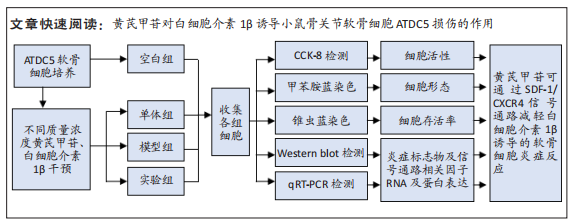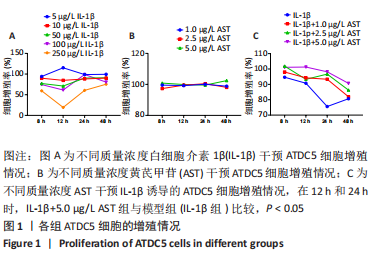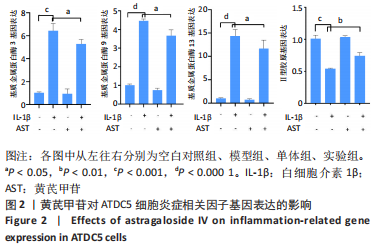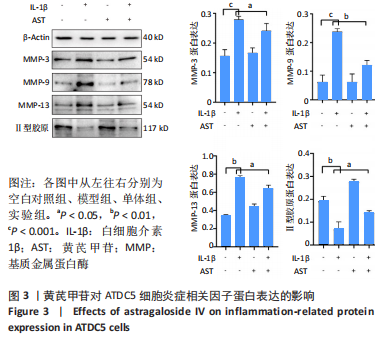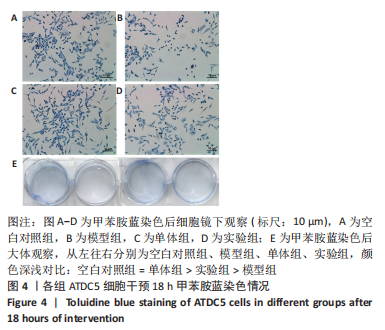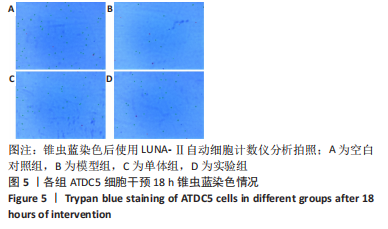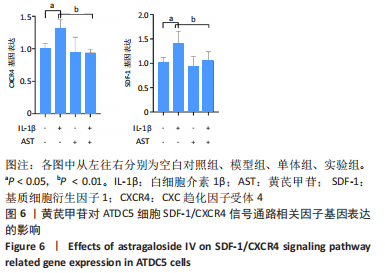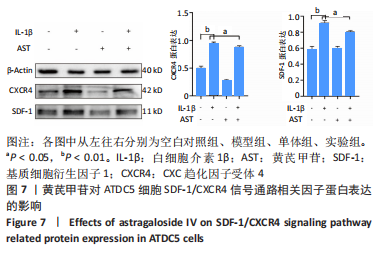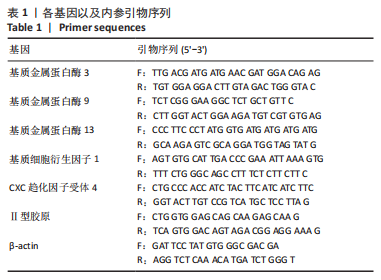[1] 郑晓芬.骨关节炎发病机制和治疗的最新进展[J].中国组织工程研究,2017,21(20):3255-3262.
[2] 潘炳,周颖芳,方芳,等.骨性关节炎的国内外研究现状及治疗进展[J].中国中医基础医学杂志,2021,27(5):861-865.
[3] JIMÉNEZ G, COBO-MOLINOS J, ANTICH C, et al. Osteoarthritis: Trauma vs Disease. Adv Exp Med Biol. 2018;1059:63-83.
[4] 中华中医药学会骨伤科分会膝痹病(膝骨关节炎)临床诊疗指南制定工作组.中医骨伤科临床诊疗指南·膝痹病(膝骨关节炎)[J].康复学报,2019,29(3):1-7.
[5] YANO F, OHBA S, MURAHASHI Y, et al. Runx1 contributes to articular cartilage maintenance by enhancement of cartilage matrix production and suppression of hypertrophic differentiation. Sci Rep. 2019;9(1):7666.
[6] HEINEGÅRD D, SAXNE T. The role of the cartilage matrix in osteoarthritis. Nat Rev Rheumatol. 2011;7(1):50-56.
[7] RAHMATI M, NALESSO G, MOBASHERI A, et al. Aging and osteoarthritis: Central role of the extracellular matrix. Ageing Res Rev. 2017;40:20-30.
[8] 范重山,孙明帅,韩文朝.促炎因子及基质金属蛋白酶在骨关节炎发病机制及相关治疗中的地位和作用[J].中国组织工程研究,2021, 25(32):5162-5170.
[9] 汪国翔,章晓云.骨关节炎病变过程中炎症细胞因子及相关信号通路的作用机制[J].中国组织工程研究,2021,25(14):2266-2273.
[10] LI H, PENG Y, WANG X, et al. Astragaloside inhibits IL-1β-induced inflammatory response in human osteoarthritis chondrocytes and ameliorates the progression of osteoarthritis in mice. Immunopharmacol Immunotoxicol. 2019;41(4):497-503.
[11] LU W, SHI J, ZHANG J, et al. CXCL12/CXCR4 Axis Regulates Aggrecanase Activation and Cartilage Degradation in a Post-Traumatic Osteoarthritis Rat Model. Int J Mol Sci. 2016;17(10):1522.
[12] BOER CG, HATZIKOTOULAS K, SOUTHAM L, et al. Deciphering osteoarthritis genetics across 826,690 individuals from 9 populations. Cell. 2021;184(18):4784-4818.e17.
[13] 曹向昱,刘雨曦,曹永平.老年退行性骨关节炎治疗进展[J].中国临床保健杂志,2022,25(1):25-29.
[14] CHAN CM, MACDONALD CD, LITHERLAND GJ, et al. Cytokine-induced MMP13 Expression in Human Chondrocytes Is Dependent on Activating Transcription Factor 3 (ATF3) Regulation. J Biol Chem. 2017;292(5):1625-1636.
[15] DENG Z, LIN Z, ZHONG Q, et al. Interleukin 1 beta-induced chloride currents are important in osteoarthritis onset: an in vitro study. Acta Biochim Biophys Sin (Shanghai). 2021;53(4):400-409.
[16] VINCENT TL. IL-1 in osteoarthritis: time for a critical review of the literature. F1000Res. 2019;8:F1000 Faculty Rev-934.
[17] NA HS, PARK JS, CHO KH, et al. Interleukin-1-Interleukin-17 Signaling Axis Induces Cartilage Destruction and Promotes Experimental Osteoarthritis. Front Immunol. 2020;11:730.
[18] 肖勇洪,毕翊鹏,阮莹艺,等.彭江云辨治骨关节炎经验总结[J].辽宁中医杂志,2017,44(7):1371-1372.
[19] AUYEUNG KK, HAN QB, KO JK. Astragalus membranaceus: A Review of its Protection Against Inflammation and Gastrointestinal Cancers. Am J Chin Med. 2016;44(1):1-22.
[20] FU J, WANG Z, HUANG L, et al. Review of the botanical characteristics, phytochemistry, and pharmacology of Astragalus membranaceus (Huangqi). Phytother Res. 2014;28(9):1275-1283.
[21] ZHANG J, WU C, GAO L, et al. Astragaloside IV derived from Astragalus membranaceus: A research review on the pharmacological effects. Adv Pharmacol. 2020;87:89-112.
[22] SHAN H, ZHENG X, LI M. The effects of Astragalus Membranaceus Active Extracts on Autophagy-related Diseases. Int J Mol Sci. 2019;20(8):1904.
[23] JIANG H, FAN C, LU Y, et al. Astragaloside regulates lncRNA LOC100912373 and the miR‑17‑5p/PDK1 axis to inhibit the proliferation of fibroblast‑like synoviocytes in rats with rheumatoid arthritis. Int J Mol Med. 2021;48(1):130.
[24] WANG B, CHEN MZ. Astragaloside IV possesses antiarthritic effect by preventing interleukin 1β-induced joint inflammation and cartilage damage. Arch Pharm Res. 2014;37(6):793-802.
[25] LIU J, MENG Q, JING H, et al. Astragaloside IV protects against apoptosis in human degenerative chondrocytes through autophagy activation. Mol Med Rep. 2017;16(3):3269-3275.
[26] MALEMUD CJ. Inhibition of MMPs and ADAM/ADAMTS. Biochem Pharmacol. 2019;165:33-40.
[27] MEHANA EE, KHAFAGA AF, EL-BLEHI SS. The role of matrix metalloproteinases in osteoarthritis pathogenesis: An updated review. Life Sci. 2019;234:116786.
[28] JARECKI J, MAŁECKA-MASALSKA T, KOSIOR-JARECKA E, et al. Concentration of Selected Metalloproteinases and Osteocalcin in the Serum and Synovial Fluid of Obese Women with Advanced Knee Osteoarthritis. Int J Environ Res Public Health. 2022;19(6):3530.
[29] LIU CX, GAO G, QIN XQ, et al. Correlation Analysis of C-terminal telopeptide of collagen type II and Interleukin-1β for Early Diagnosis of Knee Osteoarthritis. Orthop Surg. 2020;12(1):286-294.
[30] FIRNER S, ZAUCKE F, MICHAEL J, et al. Extracellular Distribution of Collagen II and Perifibrillar Adapter Proteins in Healthy and Osteoarthritic Human Knee Joint Cartilage. J Histochem Cytochem. 2017;65(10):593-606.
[31] STANCKER TG, VIEIRA SS, SERRA AJ, et al. Can photobiomodulation associated with implantation of mesenchymal adipose-derived stem cells attenuate the expression of MMPs and decrease degradation of type II collagen in an experimental model of osteoarthritis? Lasers Med Sci. 2018;33(5):1073-1084.
[32] KANBE K, CHIBA J, INOUE Y, et al. SDF-1 and CXCR4 in synovium are associated with disease activity and bone and joint destruction in patients with rheumatoid arthritis treated with golimumab. Mod Rheumatol. 2016;26(1):46-50.
[33] QIN HJ, XU T, WU HT, et al. SDF-1/CXCR4 axis coordinates crosstalk between subchondral bone and articular cartilage in osteoarthritis pathogenesis. Bone. 2019;125:140-150.
[34] NAGASAWA T. CXC chemokine ligand 12 (CXCL12) and its receptor CXCR4. J Mol Med (Berl). 2014;92(5):433-439.
[35] KANBE K, TAKAGISHI K, CHEN Q. Stimulation of matrix metalloprotease 3 release from human chondrocytes by the interaction of stromal cell-derived factor 1 and CXC chemokine receptor 4. Arthritis Rheum. 2002;46(1):130-137.
[36] KITAORI T, ITO H, SCHWARZ EM, et al. Stromal cell-derived factor 1/CXCR4 signaling is critical for the recruitment of mesenchymal stem cells to the fracture site during skeletal repair in a mouse model. Arthritis Rheum. 2009;60(3):813-823.
[37] VILLALVILLA A, GOMEZ R, ROMAN-BLAS JA, et al. SDF-1 signaling: a promising target in rheumatic diseases. Expert Opin Ther Targets. 2014;18(9):1077-1087.
[38] KANBE K, TAKEMURA T, TAKEUCHI K, et al. Synovectomy reduces stromal-cell-derived factor-1 (SDF-1) which is involved in the destruction of cartilage in osteoarthritis and rheumatoid arthritis. J Bone Joint Surg Br. 2004;86(2):296-300.
[39] WANG K, LI Y, HAN R, et al. T140 blocks the SDF-1/CXCR4 signaling pathway and prevents cartilage degeneration in an osteoarthritis disease model. PLoS One. 2017;12(4):e0176048.
[40] QIN H, LIU P, LIN S. Effects of Astragaloside IV on the SDF-1/CXCR4 Expression in Atherosclerosis of apoE(-/-) Mice Induced by Hyperlipaemia. Evid Based Complement Alternat Med. 2015; 2015:385154.
|
